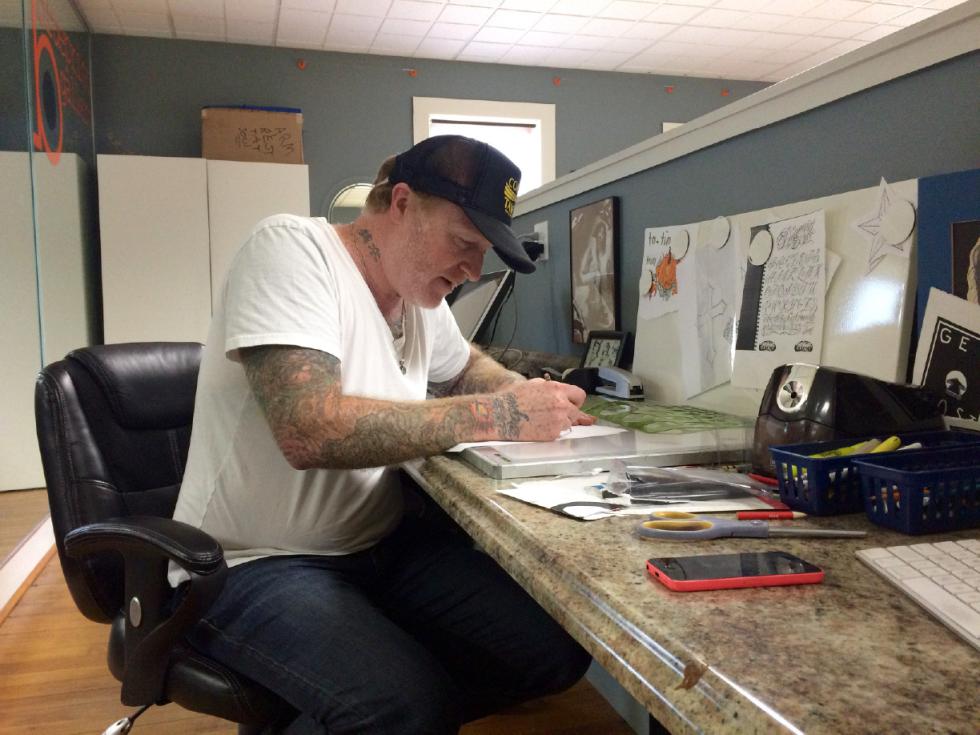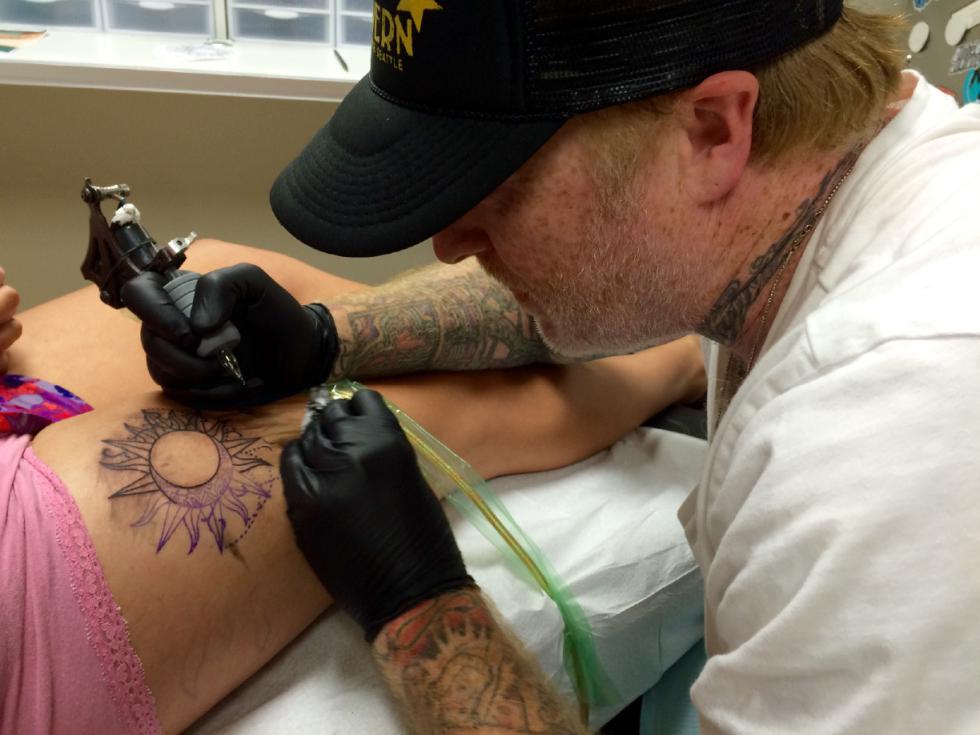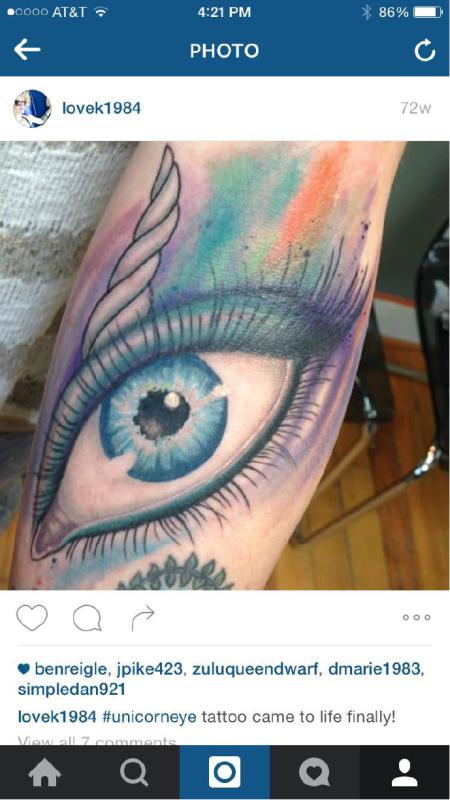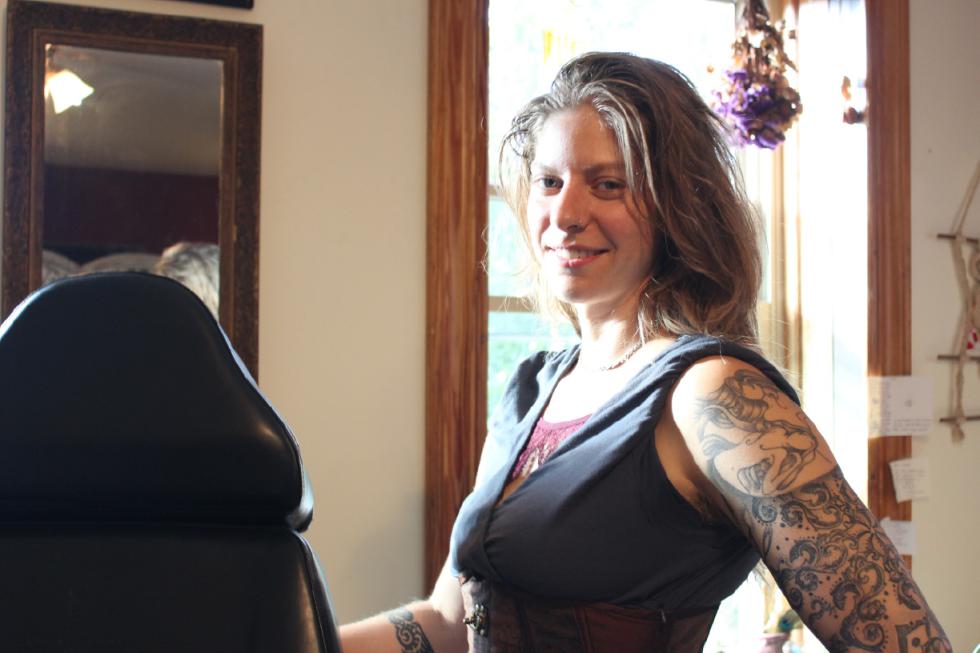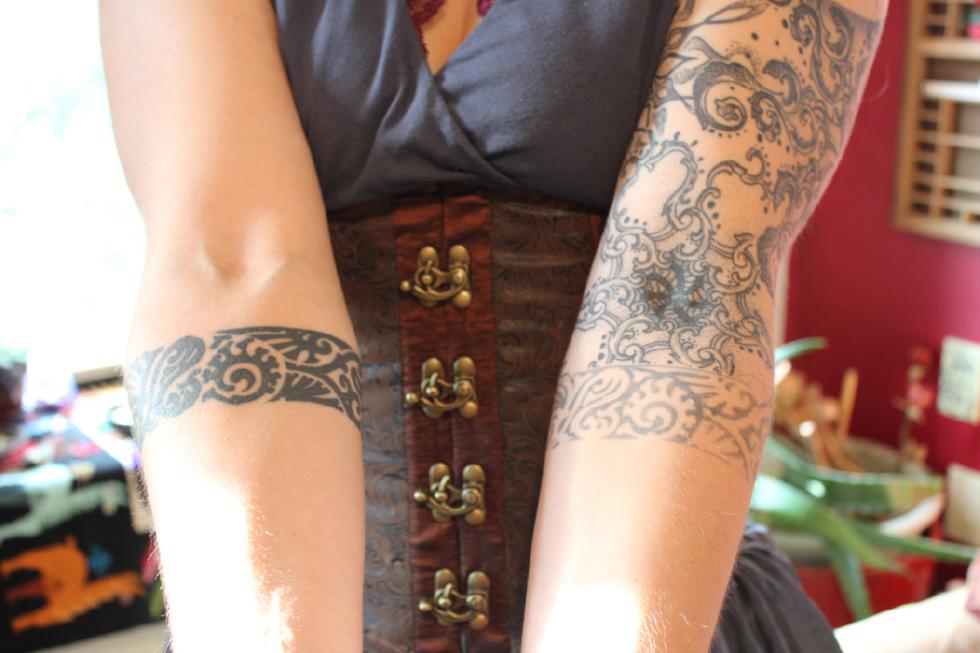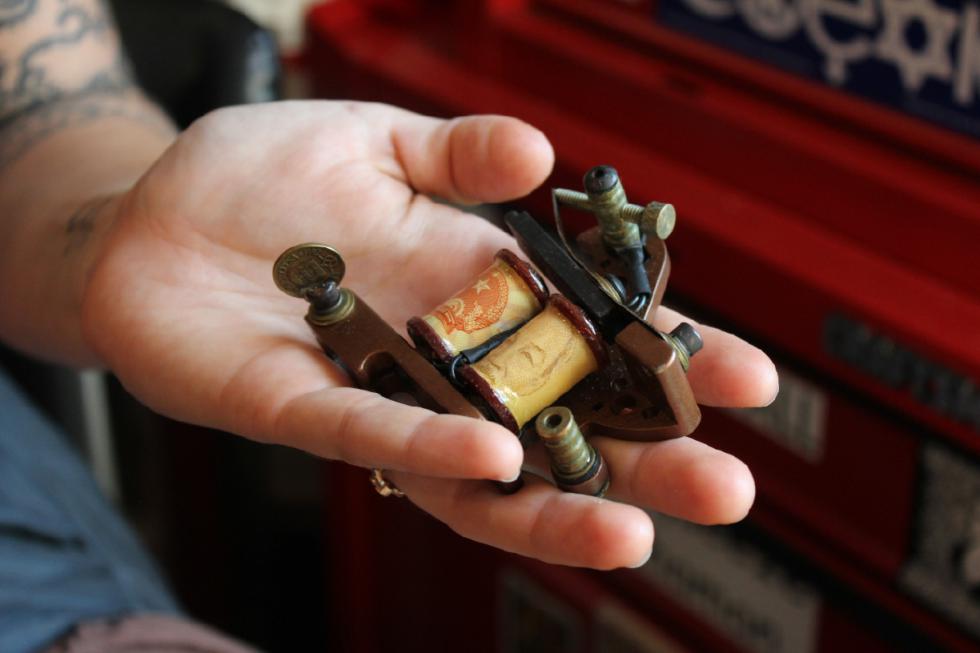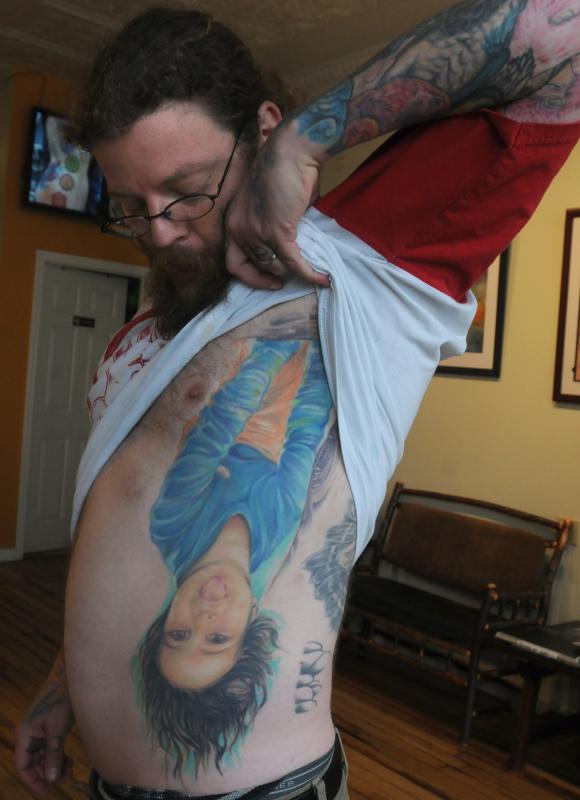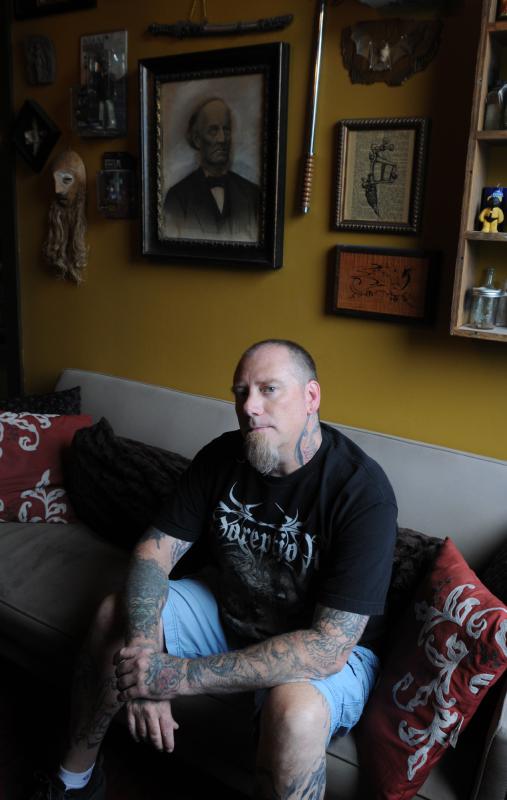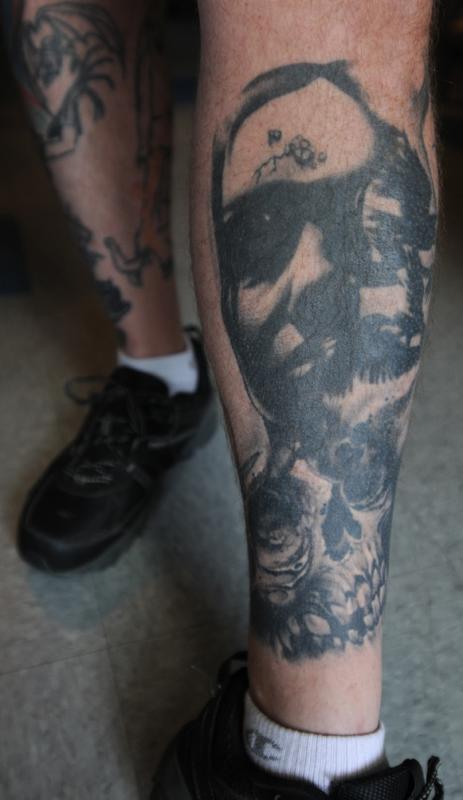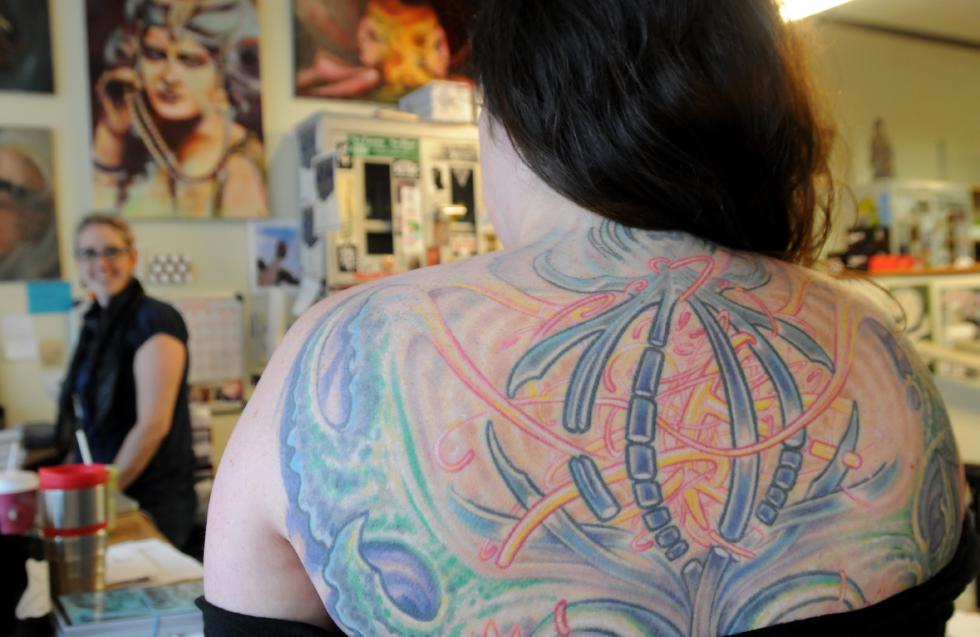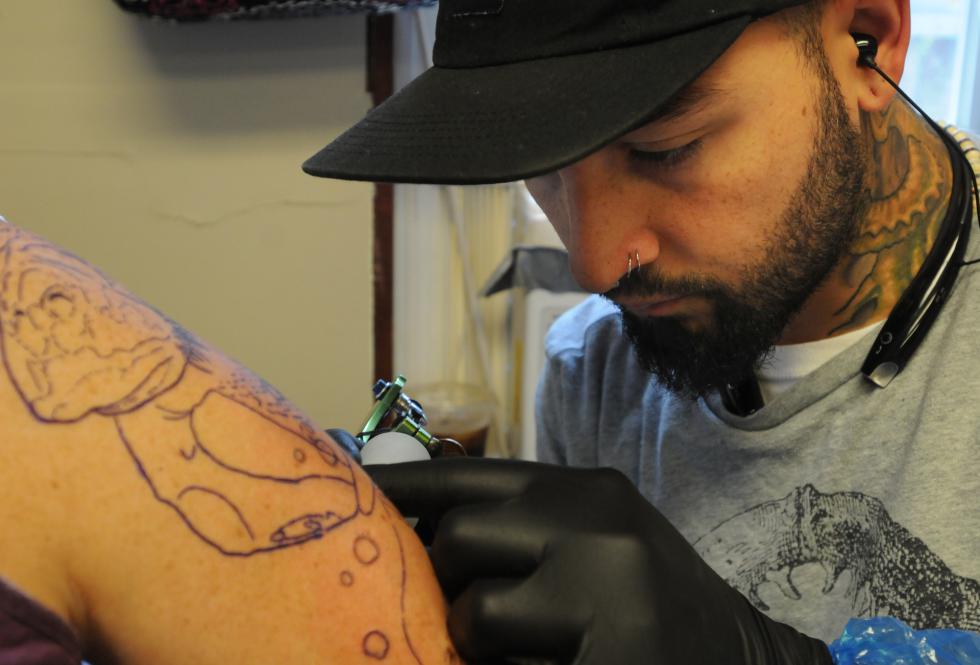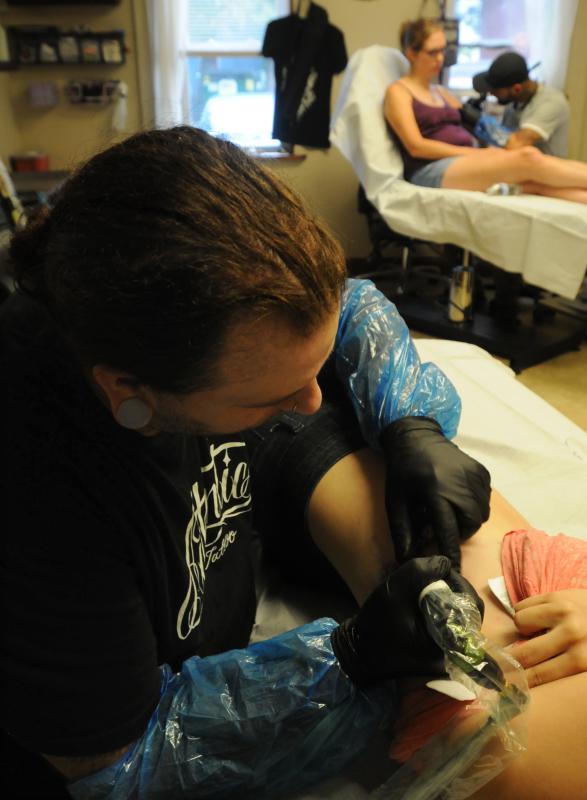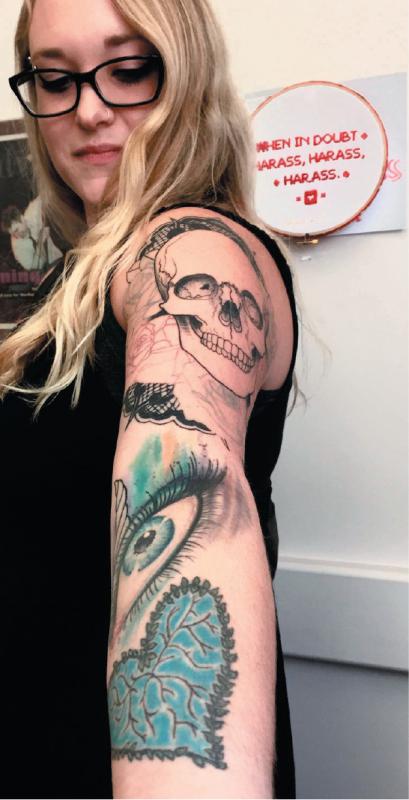Tattooed people are often asked what they think their tattoos will look like once they get older and their skin begins to wrinkle and age.
My response has always been, “Well, I will look like a colorful little old lady with a gray braid, of course.” Let’s face it, if you’re getting tattooed now, you are doing it for your present self, not your future self.
In the course of the last decade or so, the acceptance of tattoos has changed drastically. You can walk into a bank and your teller will have a full sleeve poking through her dress shirt while professionally handling your transaction. The lawyer helping you out on a case may have a chest piece that you can see just below his tie.
Whether it be intricate or simple, tattoos are a life investment. Doing research to find the right artist for you should be on your priority list before you randomly get one. Also: Don’t randomly get one.
First figure out what you want: pick colors and concepts that you love and won’t get bored with. Next keep it simple: one main subject, one secondary subject, one background image. Choose a place on your body for the tat with your naked body in mind, not how the art will look in a T-shirt. This is for life.
To find an artist, visit studios and carefully study the portfolio or live work of an artist. When looking at finished tattoos, check the lines — they should be smooth and not jumpy; the circles should be circles, not ovals; colors should be bold and filled in completely.
Ready for some ink? The following are profiles of four representative studios in the area:
Blueprint Gallery
When his 3 p.m. appointment walks in, Tim Brewer turns off the gangster rap. Grabbing a remote, he changes the Netflix movie playing on the TV screens to Muscle Shoals, a 2013 music documentary about the Alabama recording studio. He has tattooed this client before, and today’s session, he knows, calls for Aretha Franklin with a side of Rolling Stones.
“One time, this guy walked in wearing a button-up shirt and khaki pants,” Brewer tells me. We are sitting at his desk, where he is hunched over a light box, tracing out a new design. “He looked like a Steely Dan fan, so I threw that on. Then he tells me he was just listening to Steely Dan in the car! I’m getting pretty good at that.”
For two decades Brewer worked at Body Graphics Tattoo in South Windsor, Connecticut. Three years ago, tired of “all the death metal,” he opened Blueprint Gallery in Hadley — a tranquil and minimalist space that bears more resemblance to an art gallery or private design firm than the classic heart-and-barbed-wire street shop.
Many of the new tattoo shops cropping up look like Blueprint Gallery: almost clinically neutral in tone, and geared toward making people feel welcome and relaxed. It’s not quite a day spa in here, but switch the channel to a babbling brook, or some rainforest footage, and nothing would seem amiss.
Brewer takes one or two appointments a day — usually booked three or four months in advance — and he tailors each one to the customer. The shop is run by appointment only, with no regular hours printed on the door. Brewer is here full time, as is tattoo artist Ben Reigle, whose chair occupies the neighboring cubicle. The other two stalls are open for rent, but Brewer says he’s only looking to collaborate with artists that he doesn’t have to manage or quality-check. “It’s just easier that way.”
While Brewer finishes drawing at his desk, Kelsey sits up front with her father. A 23-year-old high school teacher living in Enfield, Connecticut, she drove up here today to get her third tattoo from Brewer: an original sun, moon, and stars design on her upper thigh (she asked that her last name be withheld, to shield her skin from student Googling).
Kelsey’s mother met Brewer at a yoga teacher training a few years back. “He’s the best,” she says excitedly. “He’s gentle and nice and kind. He gets in my brain and knows what I want — even better than I do.”
She shows me a photo of her last tattoo: colorful dragonflies taking flight across her side. “I’m obsessed with it. I look at it all the time.”
Brewer finishes a draft of his drawing, which is based on images emailed to him by Kelsey. He consults with her, then comes back to the drawing board and grabs his pencil. “This is what erasers are for,” he says, rubbing at the paper. “She didn’t want to do a face in the sun. So we’ll do some intricate stuff in the design of the moon.”
Kelsey likes the revision. The four stars hanging on strings from the moon represent members of her family. With Brewer’s help, she places a carbon-copy stencil of the image on her thigh, high up enough to add more stars in future years.
Then the session begins. The tattoo takes about 70 minutes. The tattoo gun hums, and Brewer wipes away excess black ink after each run along Kelsey’s skin. Wincing occasionally, she watches Mick Jagger on the screen.
Kelsey leaves satisfied, her leg bandaged and taped. It feels like a really bad sunburn, she tells me, but she expects it to heal quickly.
I ask Brewer whether he’s done that tattoo before. Not exactly, he says. But something like it? Many times. Which is why he prides himself on adaptability.
“I haven’t wanted to relegate myself to a style,” he says. “Some of my friends have pigeonholed themselves. They’ll be on their 80th pin-up girl in a row, and they’re sick of it, but they’re just so good at it that everyone wants it.”
Brewer has days — and who doesn’t? — when he wants to do something else. “This work is like a pair of golden handcuffs,” he says, smiling. “When you’ve been doing it for so long and the money’s really great, it’s hard to walk away from. But when I sit down and think about it — I’m an artist, and people seek me out for my art. And they walk out super happy. That’s why I still do it.”•
— Hunter Styles
Charon Art
“The tattoo is part of you already and we’re just sort of discovering it,” says Charon Art owner and tattoo artist Leah Caldieri. “It’s becoming what you’re supposed to be, meant to be, already are.”
A tagline on the shop’s website reads: “Your body should reflect your soul.”
Caldieri, 29, says she realized she needed to get out of the smoke-filled world of back-room tattooing in order to do the kind of spiritual art she envisioned, so she opened Charon Art in Turners Falls in September, 2014. There, she and two other women combine their tattooing with energy work and astrology.
After finishing art school, Caldieri trained in tattooing and at the same time received formal reiki training. Tattooing, she says, is a process often lacking a spiritual, esoteric element. She says she therefore felt inspired to fuse tattooing — which she views as a “powerful” experience in and of itself — spirituality, and healing transformation.
Caldieri helps clients tap into the energy they’re looking to express outwardly by guiding them through meditation. She’ll light some sage or incense, a candle, and the group — clients most commonly bring people with them when getting tattooed, she says — will circle up and hold hands. “It’s about creating a special place,” says Caldieri. “I try to make it feel cleansed and prepared for them.”
Caldieri says by making the space for energy to flow freely it sets an intention, and everything just starts to happen. During these pre-tattoo sessions, Caldieri says, she’ll do reiki either passively or directly, meaning she’ll channel healing energy into the client either by touching them or by indirect meditation. “Energy starts circulating — it just happens by building that environment.”
This process, says Caldieri, eases anxiety and encourages centering. Many of the images she designs, she says, are meant to have a healing effect as well. “The image by itself can be a manifestation of what they were feeling,” she says.
Many times a client will tell a story, wanting to mark a moment in time or transition. Caldieri says the image’s inception requires hashing out the client’s issues, getting to the heart of what they’re feeling and why. “I want people to be able to express what they need, what will help them feel whole.”
Caldieri offers the bands on her forearms as examples of tattoos intended for healing. She got those a few years ago, she says, when she felt she needed to work on thinking more and considering consequences before acting. The bands, she says, are there to be grounding — all thoughts have to pass through them before her hands can take action.
Caldieri’s apprentice Simone Audette infuses her tattoo work with astrological aspects, consulting clients on their birth charts and helping to put an image to astrological facets they’d like to externalize.
Caldieri says that while artists at Charon love to be part of the creative process, they’re also happy to help people who come in wanting that pre-designed bird or butterfly. “We’re not at all exclusionary,” Caldieri says. “I want to give people the experience they want to have.”
Caldieri says tattoo artists are inclined to tattoo each other when they’re bored, so it’s taken some effort to pace herself. She says she only gets new tats when the time feels right, so all of hers “are loaded with spirituality.”
Caldieri says her process varies from person to person and from project to project. “Some take some homework,” she says. “And sometimes it’s just sitting down with sharpies and drawing on them directly.”
Her advice for anyone thinking about a tattoo: “The pain of the process shouldn’t influence decisions about what to get and where,” says Caldieri. “It’s really important that it is what it needs to be and it’s where it needs to be.”
Just as crying is cathartic, pain can be useful, says Caldieri, in that it “can be a method for accessing a different mindset, a different plane.
“Pain is a gateway that can take you places,” she says. “Find the pain and internalize it. It doesn’t stop hurting, but you access a different part of yourself.”•
— Amanda Drane
Nitemare Tattoos
You haven’t arrived at Nitemare Tattoos until you’re sure you’re lost. The shop is nestled into an industrial parking lot along Depot Square in Westfield, invisible from the street. Once you turn the proper corner, you see a mural bearing the company’s name in the color of dried blood, which looms above a loading dock. Step through a battered wooden door in the brick exterior, into a dusty narrow hallway, and still you’re not quite there yet.
The climb upstairs is surreal. You arrive into another mural — an eerie woodscape that wraps around on all sides — and face another thick door. Overhead hangs the 3-D figure of a screaming man half-melted into the wall, like Han Solo in carbonite. This must be the place.
Hard-to-find is exactly the vibe Nitemare Tattoos is going for. Staffers at this appointment-only shop, which books six to eight weeks out, prefer to stay tucked away, doing their work in peace.
Owner and tattoo artist Jamie Cross is the punk equivalent of that wise bearded guy seated atop the mountain in the comic strips. Westfield isn’t much of a town for tattoo shops, and Cross is a bit of a professional hermit. He specializes in portrait work, which customers will seek out many months in advance. He and his business partner Tony Turrini moved into their space — a homey upstairs brightly lit and crowded with funky paintings and sculptures — about 13 years ago.
Cross has been tattooing for 30 years. He seems quiet, but kind, with a long goatee and a persistent small frown of concentration. Today he sits in a rolling office chair, tattooing the leg of Westfield resident Darren Gilmet.
Gilmet, 43, works a local manufacturing job. For the image on his calf, which will measure about six inches in length, he has chosen a black-and-white photograph of his mother, taken as a small child in a portrait studio. He started getting tattoos three years ago, and this will be his ninth piece — all inked at Nitemare.
“Jamie definitely has a reputation around here,” he tells me, speaking loudly over the thrashing metal song playing on the stereo. “Everybody knows who he is. People told me that it’s worth the wait — don’t go anywhere else.”
Every tattoo Gilmet has is family-oriented. The name of his little brother, who died young, is tattooed across his back (“So painful, but worth it”), and he plans on putting his 11-year-old daughter’s face on his other leg.
“I went through a real rough spell in my life, and so much of my family stuck by me,” he says. “I just wanted to keep them as a part of me.”
Does your mother know that you’re getting her face tattooed on your leg? I ask.
“I’ll show her when it’s done. She doesn’t like me marking up my body, but she does appreciate the art of it, I think.”
Gilmet found Nitemare on Facebook and ended up here through word of mouth. That’s usually how it goes, Cross tells me, when people are looking for portraits. “That and scary stuff — skulls and monsters. I love doing those.”
Sometimes Cross’s portraits are of loved ones, but they are just as often the faces of celebrities, like Jack Nicholson and Kurt Cobain. Setting his tattoo gun to cover various widths with each stroke, he achieves an impressive three-dimensional shading effect. Step back and ignore that buzzing sound of needle on flesh, and Cross looks just like a painter, working methodically with his brushes.
“We get a little bit of everyone in here,” Cross says. “We do everything from portraits to skulls to pretty stuff. It’s a relaxed place.”
“Relaxed” may be a relative term. On the way in, I noticed that the DVD cabinet in the waiting area is full of movies like From Dusk Till Dawn, Dracula, and a wonderfully titled gorefest called Fear Clinic. The coffee table is stacked with issues of Playboy, Maxim, and a body-mod pub called Pain Magazine.
I ask Cross whether certain clients are turned off by the sexy-Halloween-death-metal thing. He just shrugs. “We want the customer to be comfortable. But we want to be comfortable, too.”•
— Hunter Styles
Off the Map Tattoo
When Off the Map Tattoo owner Gabe Ripley lifts up his shirt, a life-sized image of his daughter Cecelia’s tongue-out, upside-down face appears. “She was four when she requested this,” says Ripley. “She’s twelve, now.”
Staff at Off the Map in Easthampton are proud of their tats. They quickly pull up pant legs, whip out the specialized moisturizer, and furnish their colorful masterpieces.
“My son is a bat,” says Rachael Nalewanski, assistant manager. On her leg is a cartoon-style image of her young son’s face with a bat body. “He thinks it’s really cool now. We’ll see how he feels when he’s a teenager.”
Off the Map celebrates its 10th birthday this December. Ripley says he and the other shareholders designed the business around guest artistry, choosing Easthampton because it’s a cool little town he knew would keep traveling tattoo artists coming back for more. “I felt this would be a destination for artists,” says Ripley. “I knew traveling tattooers would have a good time here.”
Right away, Ripley says, he found guest artists coming to learn also had much to teach.
“I wanted to be able to infuse education into the business,” says Ripley, adding that his wife works in childhood development, so education is a constant in his household. Tattoo artists all over the world turn to Off the Map for seminars and workshops, he says. In November, they’ll webcast to South America from their new space in Easthampton’s Button Building, offering an all-Spanish seminar. There are two other Off the Map locations — one in Grants Pass, Oregon, and one in Cervignano Del Friuli, Italy.
Ripley says what put Off the Map on the map in Oregon and Italy were ties to Jeff Gogue and Alex De Pase. Both had been guest artists at Off the Map in Easthampton and, liking what they saw, talked to Ripley about opening more shops in their own stomping grounds. These talks weren’t quite “for real” until all three were teaching at the Worldwide Tattoo Conference in Rome in 2009. After the conference, they broke ground in Oregon and three years later in Italy. “We all love teaching,” says Ripley of his international partnership with Gogue and De Pase. “All three partners are very like-minded.”
Off the Map’s vision has grown over the past decade, Ripley says. He points out that reality television was making its big splash 10 years ago, as they opened the shop. Now, he says, they have their own show. You can find episodes of Off the Map LIVE on their Youtube channel and additional links on their website.
“Our focus on education is really the thing that sets us apart,” says Ripley. The artists come in from out of town and “shake things up,” he says. “It helps attract tattooers that want to keep learning and better themselves.” And, he says, those types of artists are among the best in the business.
Ripley, however, is not a tattoo artist. He’s an enthusiast. “I wanted a fantastic body suit that I wouldn’t have been able to afford if I hadn’t taken this path,” Ripley says after I ask him how he got into the tattoo business.
Ripley has made a career off of helping tattoo virgins get it right the first time — lessons he and others at the shop learned via laser removal. He’s had tattoos removed from his leg, arm, and back. A pamphlet authored by Ripley and Nick Baxter, Get the Perfect Tattoo, sits on a table by the door.
Ripley says they also offer free consultations and encourage slow, careful planning in advance.
“A lot of people get good tattoos here for the first time, and I’m almost jealous of them,” Ripley says. “Often it takes five to 10 years to get a good tattoo.”•
— Amanda Drane

